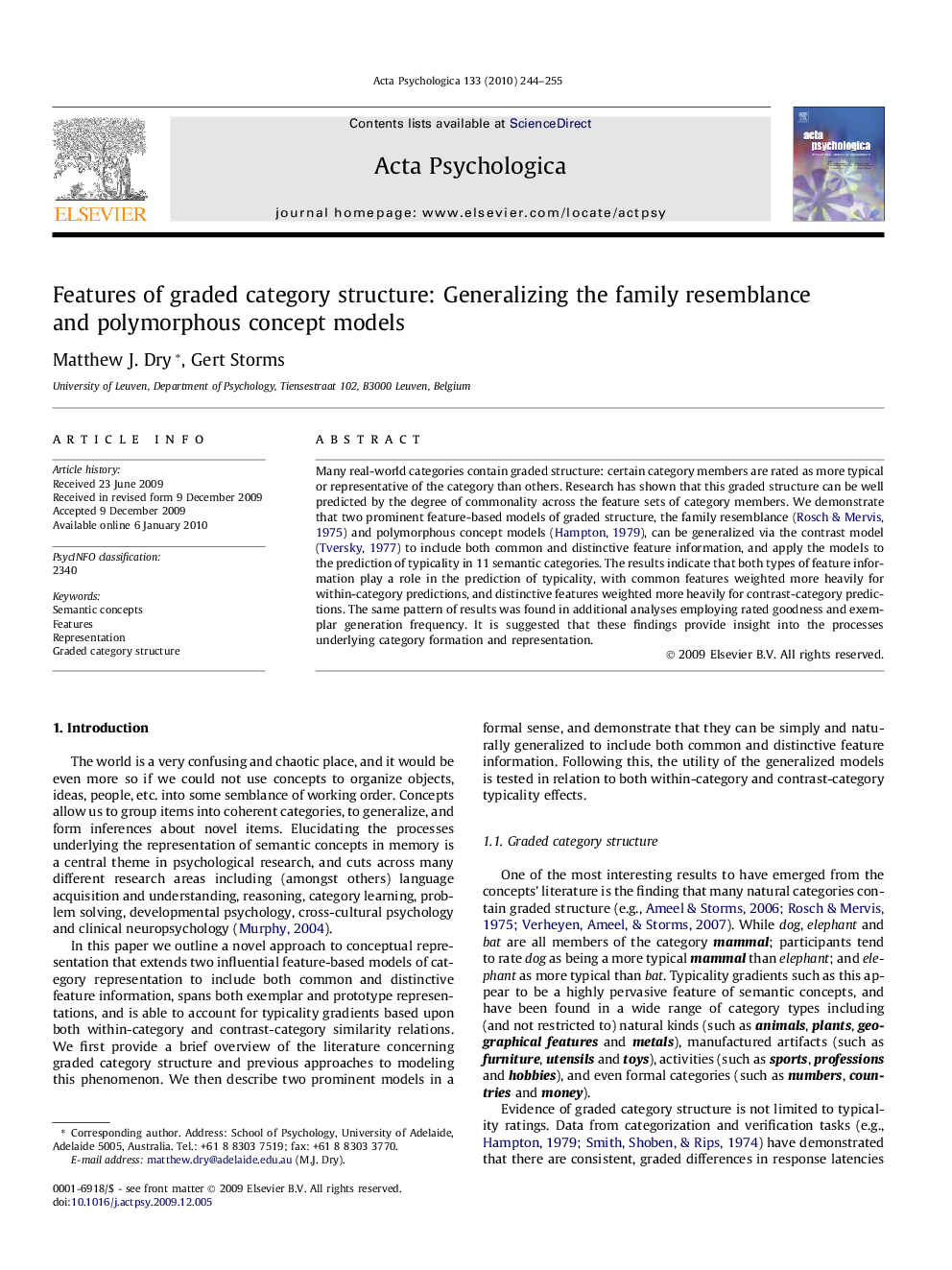| Article ID | Journal | Published Year | Pages | File Type |
|---|---|---|---|---|
| 920268 | Acta Psychologica | 2010 | 12 Pages |
Many real-world categories contain graded structure: certain category members are rated as more typical or representative of the category than others. Research has shown that this graded structure can be well predicted by the degree of commonality across the feature sets of category members. We demonstrate that two prominent feature-based models of graded structure, the family resemblance (Rosch & Mervis, 1975) and polymorphous concept models (Hampton, 1979), can be generalized via the contrast model (Tversky, 1977) to include both common and distinctive feature information, and apply the models to the prediction of typicality in 11 semantic categories. The results indicate that both types of feature information play a role in the prediction of typicality, with common features weighted more heavily for within-category predictions, and distinctive features weighted more heavily for contrast-category predictions. The same pattern of results was found in additional analyses employing rated goodness and exemplar generation frequency. It is suggested that these findings provide insight into the processes underlying category formation and representation.
